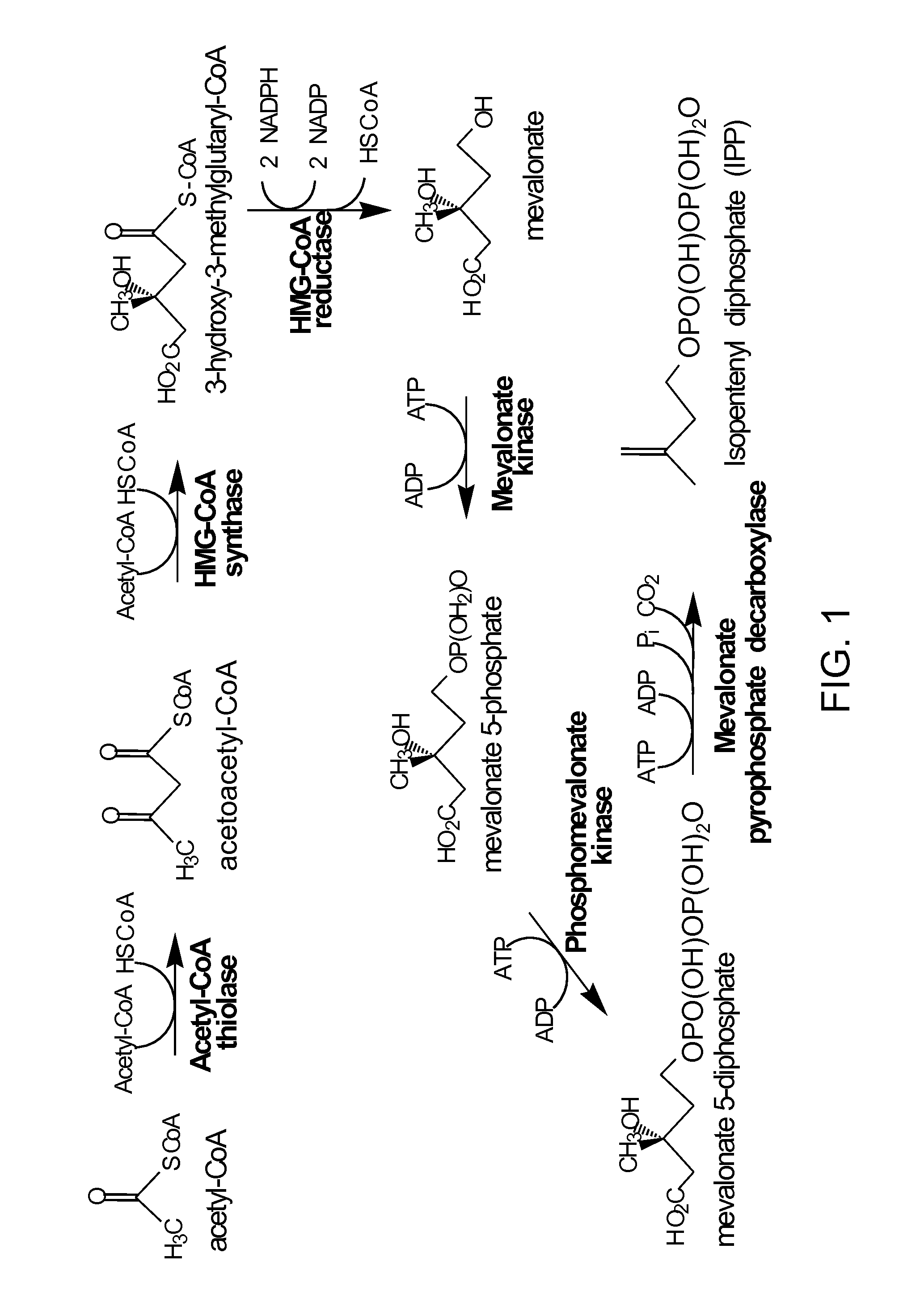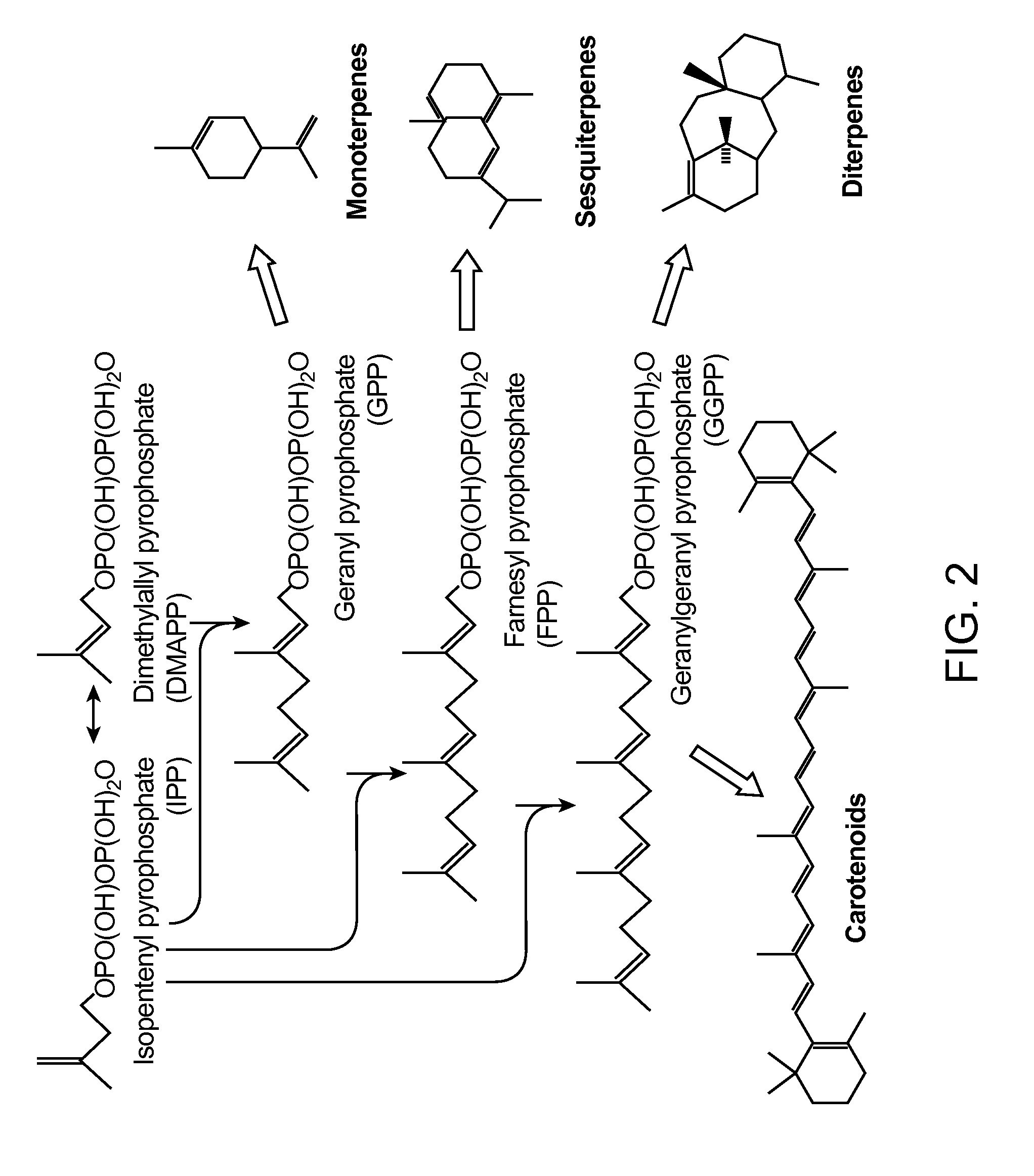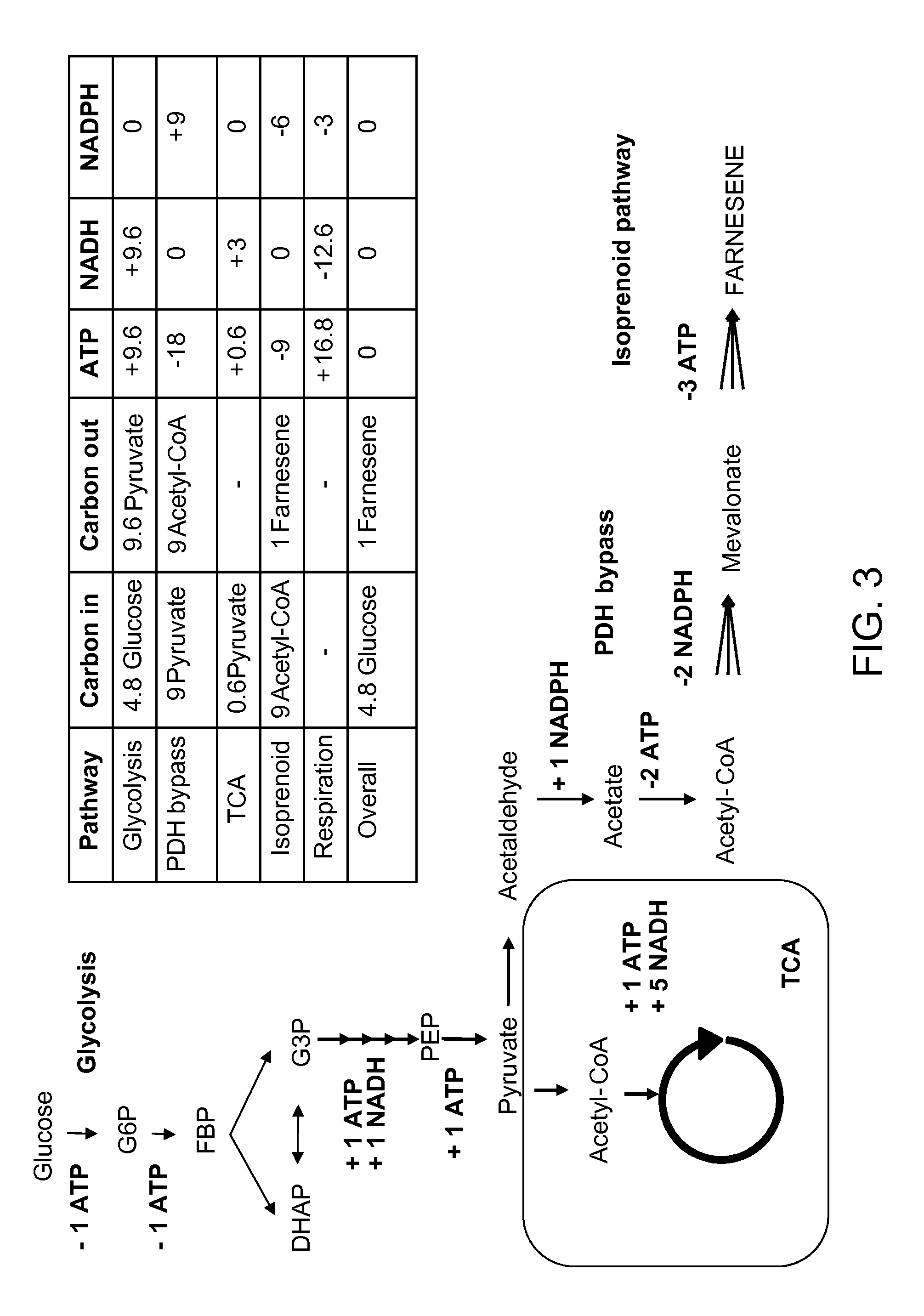Production of acetyl-coenzyme a derived isoprenoids
a technology of acetylcoenzyme and isoprenoids, which is applied in the direction of enzymology, enzymology, transferases, etc., can solve the problems of consuming nadph, reducing the energy of ada,
- Summary
- Abstract
- Description
- Claims
- Application Information
AI Technical Summary
Benefits of technology
Problems solved by technology
Method used
Image
Examples
example 2
6.2 Example 2
Improved Isoprenoid Production and Redox Balancing with Alternate Routes to Acetyl-CoA and Alternate MEV Pathway Enzymes
[0261]This example demonstrates that mevalonate and downstream isoprenoid production from the MEV pathway can be improved by utilizing alternate routes to cytolsolic acetyl-CoA production, e.g. via the heterologous expression of acetaldehyde dehydrogenase, acetylating (ADA, E.C. 1.2.1.10), in lieu of the wild-type PDH-bypass, and in various combinations with alternate MEV pathway enzymes. These results show that the redox imbalance introduced by the replacement of the NADPH-producing PDH-bypass enzymes with NADH-producing ADA can be alleviated in part by combining ADA expression with an NADH-using HMG-CoA reductase of the MEV pathway, and / or with heterologous expression of phosphoketolase and phosphotrancsacetylasse, which can also provide an additional alternate route to cytosolic acetyl-CoA production. These results further demonstrate that the catal...
PUM
| Property | Measurement | Unit |
|---|---|---|
| weight | aaaaa | aaaaa |
| weight | aaaaa | aaaaa |
| weight | aaaaa | aaaaa |
Abstract
Description
Claims
Application Information
 Login to View More
Login to View More - R&D
- Intellectual Property
- Life Sciences
- Materials
- Tech Scout
- Unparalleled Data Quality
- Higher Quality Content
- 60% Fewer Hallucinations
Browse by: Latest US Patents, China's latest patents, Technical Efficacy Thesaurus, Application Domain, Technology Topic, Popular Technical Reports.
© 2025 PatSnap. All rights reserved.Legal|Privacy policy|Modern Slavery Act Transparency Statement|Sitemap|About US| Contact US: help@patsnap.com



